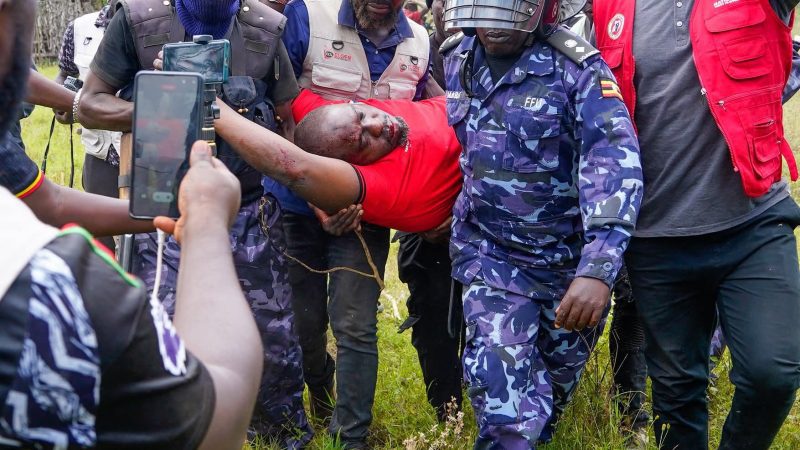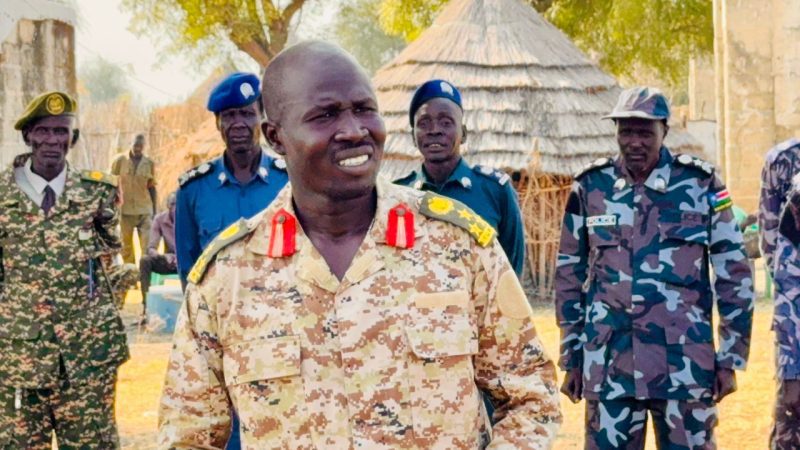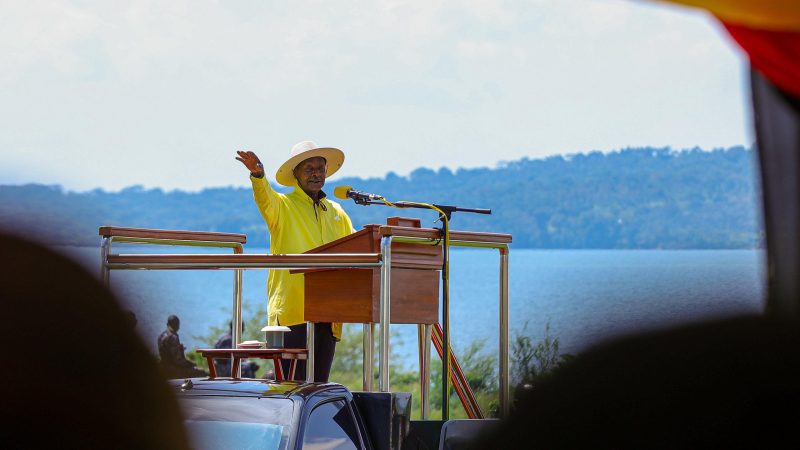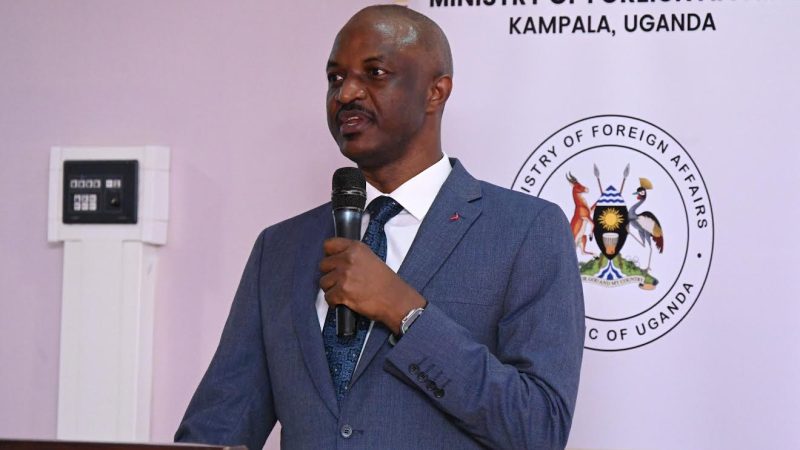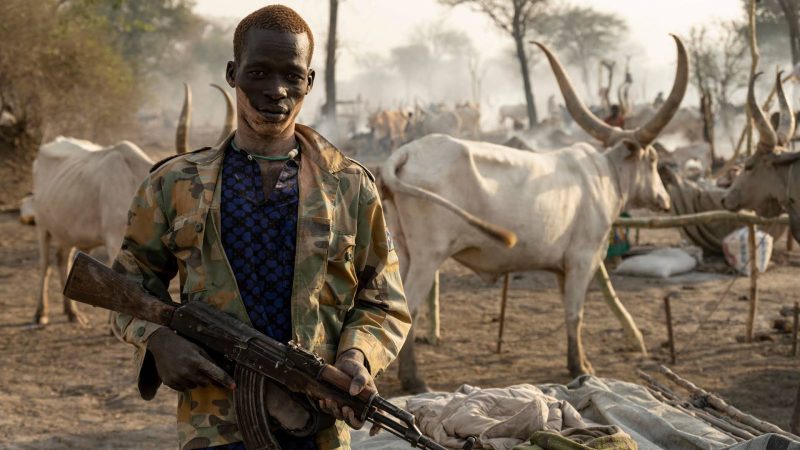Having lived most of his youthful life in London following the 1966 abolition of monarchs in Uganda by then dictator Dr. Apollo Milton Obote, Kabaka Ronald Edward Frederick Kimera Muwenda Mutebi II returned to Uganda in 1988.
This was two years after the removal of the autocratic regime of Obote II and the military junta that replaced him by the National Resistance Army rebels led by Yoweri Kaguta Museveni in 1986.
Kabaka Mutebi was proclaimed at Buddo on 24 July 1993 upon the restoration of the Ugandan Kingdoms, following the intervention of Godfrey Serunkuma Lule.
On 31 July 1993, he was crowned at Buddo, became the 36th Kabaka of Buganda and assumed the style of ‘His Majesty.” His reign started then with a major focus of re-establishing a fully functional Buganda Kingdom.
About Kabaka Muwenda Mutebi
Born on 13th April 1955 at Mulago Hospital in Kampala, Kabaka Mutebi is a son to Edward Frederick William David Walugembe Mutebi Luwangula Muteesa II, Kabaka of Buganda, who reigned between 1939 and 1969.
His mother was Nabakyala Sarah Nalule, Omuzaana Kabejja, of the Nkima clan.
Kabaka Muwenda Mutebi was educated at Budo Junior School, King’s Mead School in Sussex and Bradfield College, a public school in West Berkshire. He then entered Magdalene College, Cambridge.
He is married to one wife, Sylvia Nagginda, the Nnabagereka whom he wedded on 27 August 1999.
Nagginda is a daughter of John Mulumba Luswaata of Nkumba, Kyaddondo, a member of the Omusu clan and Rebecca Nakintu Musoke.
She is the granddaughter of George William Musoke and Nora Musoke of Nazzigo, Kyaggwe; and Omutaka Nelson Nkalubo Sebugwawo and Catherine Sebugwawo of Nkumba.
The royal wedding was held at Saint Paul’s Cathedral Namirembe, in Kampala, on 27 August 1999. Together, they have one daughter, Sarah Katrina Mirembe Ssangalyambogo Nachwa, born on 4 July 2001 in London.
At the age of 11, Kabaka Muwenda Mutebi was appointed as Heir Apparent by his father on 6 August 1966, the same year when they were sent to exile following the Kabaka Crisis.
While in exile, he worked as Associate Editor of the magazine African Concord and a member of the Executive Committee of the African National Congress (ANC) in London.
On 21 November 1969, upon the death of his father, he succeeded as the Head of the Royal House of Buganda although he stayed in London due to the tension that was too high back home.
Kabaka Mutebi’s reign
Inspite of pressures from furious Baganda who had hoped that Mutebi would rush to reclaim everything that the Central government had taken from the Kingdom, Mutebi took a slow approach, ensuring a close collaboration between the Kingdom and the Museveni government.
He was being mindful of this grumpy relationship with the central government dating back to the exiling of Kabaka Mwanga to the Seychelles in the late 19th Century, Mutesa to London in 1953 and 1966 and his own youthful years in London.
The Mutebi monarchy, realistic about its limited room for maneuver, worked its way around this problem by restoring glory and viability by other means.
Guided by Prime Ministers (KatikKiro) like Jehoash Mayanja-Nkangi and Joseph Mulwanyamuli Ssemogerere, Mutebi decided to patiently work on gaining more powers by playing on Museveni’s indebtedness over Buganda support for the NRA guerrillas.
In June 1996, an FM radio (Central Broadcasting Service, CBS) was founded and up to now remains one of the top local radio stations, earning revenue for the monarchy and aiding in information dissemination.
With further lobbying and a good relationship with the central government, a Buganda royal university, the Mutesa I Royal University, was founded, with the Buganda clan football league having been earlier revived.
Despite the good relationship between the Kabaka and the Museveni government, Baganda were still Baganda and the friction between the two parties was yet to resume.
The Kingdom started to ask afresh the problematic questions that every central government wished would simply go away. It’s at this point on, the tensions between the two began.
Top shots in the Kingdom started asking questions about a restoration of the federal status Buganda had enjoyed under the 1962 Constitution but the Mengo government sidelined them in fear of the repetition of 1966 events.
That notwithstanding, loyal army officers like Major Herbert Itongwa launched brief military uprisings in 1995 as an expression of this underlying sentiment in Buganda that would not settle for a titular monarchy. The uprising was quickly quashed.
When a land reform Bill was proposed in parliament in 1998, the matter of land the government still owed Buganda and the accumulating rent on its properties returned to the surface.
It soon became clear that the NRM government was caught up in the same damned position as the British colonial government had been in the 1950s and the UPC government in the 1960s.
Campaign to regain federal
Many Baganda intellectuals argued over the years about the formation of a comprehensive federal Uganda, for every part of Uganda.
A political party, the Uganda Federal Alliance (UFA), formed ahead of the 2011 General Election, fronted this formula of federalism: not as a partial political concession of privilege to a restless Buganda, but as a permanent solution to the problem of too much power and too many resources in the hands of the central government.
Betti Olive Namisango Kamya led the party to polls but terribly lost to the incumbent, Yoweri Museveni.
In the meantime, Buganda was saddened (and after a while also aroused to suspicion) by a fire that destroyed part of Budo Junior Primary School in April 2008, Owino Market at various intervals and most traumatic of all, a fire that gutted the historic royal tombs at Kasubi just outside Kampala in March 2010.
The cause of the fires have never been officially established, and suspicion lingers on.
Kayunga Crisis
In September 2009, three days of unexpected riots broke in Buganda when the then Katikkiro, John Baptist Walusimbi, was prevented by the government from visiting Kayunga district to prepare for a Buganda youth event to be presided over by the Kabaka.
The closure of Buganda’s rallying voice, CBS FM, for more than a year following the riots for many Baganda was a body blow by the Museveni government.
By the time yet another fire erupted at the site of the Kabaka’s coronation at Nnagalabi in 2012, the reaction among many Baganda was one of “So what’s new?”
By the 20th coronation anniversary of Mutebi II, angered by the fires at historic Buganda institutions, the continued refusal by the NRM government to pay its outstanding property rent to Buganda, the perception that corrupt westerners in the NRM government were buying up large tracts of land in Buganda, the high unemployment rate among young Baganda, the lack of progress on the federo question — all these led to great disillusionment among Baganda.
Such was the disillusionment felt in Buganda as the kingdom entered the second decade of the 21st Century that in a signal that he was starting to abandon the path of caution since, anyway, it was not doing much for Buganda, Mutebi II appointed Charles Peter Mayiga, an all-out combatant monarchist and lawyer, as the new Katikkiro in June 2013.
Mayiga’s maiden speech to the Buganda legislative council, the Lukiiko, was an unapologetic clarion call to Buganda to stand firm and tall, wait patiently, look beyond the NRM government in the belief that ultimately victory and a restoration of all things would one day come, no matter how long and frustrating the waiting might be.
By June 2013, with major splits now clear within the ruling NRM party and the army’s High Command, the Museveni government was in no position to launch the kind of rebuttal it ordinarily would have marshaled in the 1990s, and Mayiga’s confrontational speech went largely unanswered.
By July 2013 and Mutebi’s 20th coronation anniversary, Buganda was somewhere around the level of tensions of February 1966 in the tone of its relations with the central government but this has since been resolved.
The tension would later calm down after the bridged gap between the Kingdom and the central government through lobbying by the current Kaatikiro Peter Mayiga.
27 years later, the central government seems to work well closely with the Kabaka and the monarchy’s resistance has since reduced.
Additional excerpts from Daily Monitor and Wikipedia


